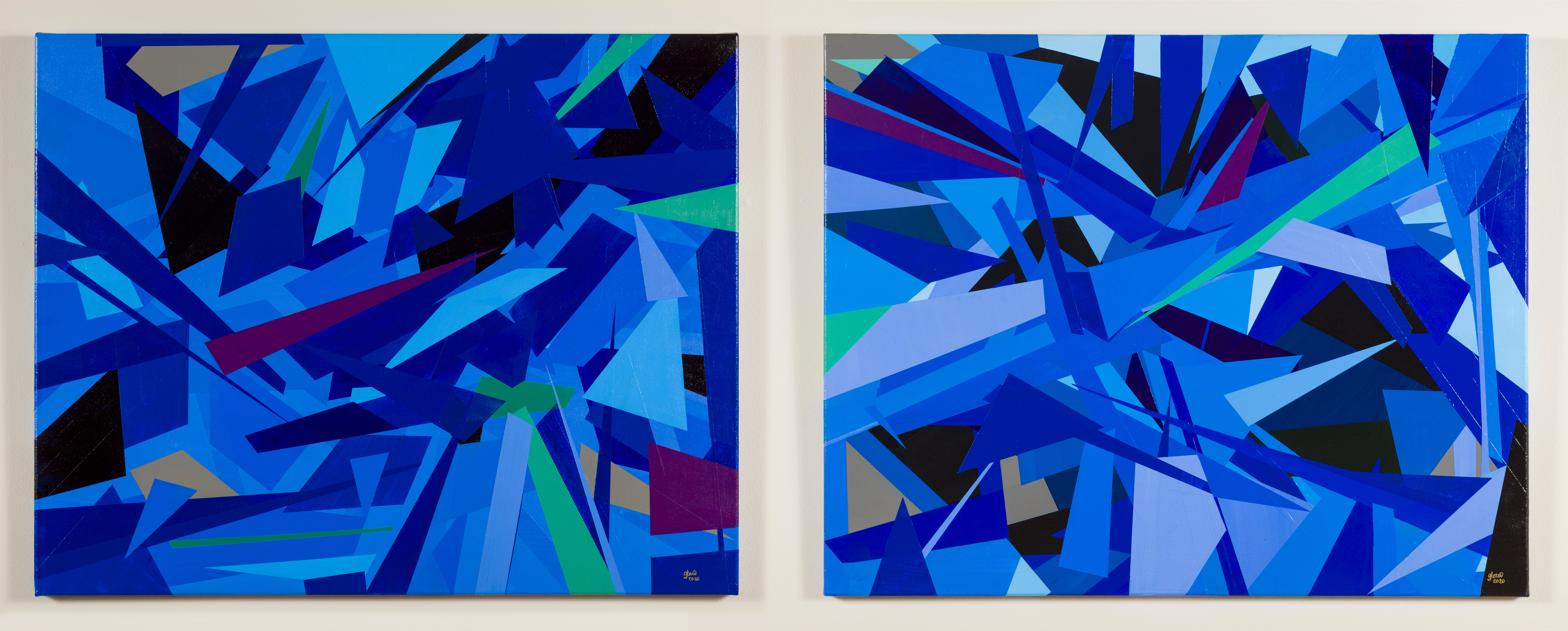Gloria C Swain
For Toronto artist and activist Gloria C Swain, geometric shapes illustrate the rhythms of life.

Gloria C Swain. Healing Powers, 2020, Acrylic. Image courtesy of the artist. Photo credit: Darren Rigo © Gloria C Swain
"My work" says Toronto artist, activist and mental health advocate Gloria C Swain, "evokes the way Black culture has always found its strength and catharsis in movement. Geometric shapes in my work illustrate the rhythms of life, with sharp edges that collide and shatter to break through oppression."
Using the mediums of installation, painting, performance and photography she challenges systemic oppression against Black women and trans people. Her work examines ongoing colonial violence and centers her own experience as an older Black feminist artist, with invisible disabilities, navigating through unwelcoming spaces.
Swain holds a certificate in Community Arts Practice and a master’s degree in Environmental Studies from York University. Her work has shown in Toronto, Manitoba, and Montreal. Her writings on disability arts activism have been published in Cultivate Feminism and Canadian Journal of Disability Studies.
AGO: Can you tell us a little bit about your practice?
Swain: Acrylic paint is my medium. I work with brushes and palette knives, creating layers to give an infinite variety of tones on canvases. I then use finishing coats to seal the final product, so not to change the properties of acrylics.
The White/Black/Grey series contains sharp geometric shapes (trapezoids, pointy triangles, squares) to map how Blackness remain in defiant while navigating through unwelcomed spaces, cutting through, and getting cut in the process.
The Blues series uses deep, cobalt blue, greys and host of bold colours that demonstrate the ongoing victimization of Black people and racial anxiety. The different variations of blue works to illustrate the role policing play into the problem of everyday anti-Black racism.
AGO: What was the inspiration for this artwork or series?
Swain: I have been creating art since I was a little girl to overcome childhood trauma. I started painting abstracts in the early 1980s. My art serves to open dialogue about ongoing colonial violence against Black bodies and stigmas about Black mental health.
This work is inspired by a legacy of intergenerational trauma and lived experiences as an elder Black feminist artist. I create large canvases of abstract and geometric paintings using lines and strong staged colours to look at what bodies are welcome in certain spaces and what bodies are unwelcome.
The monochromatic works capture the bleak narratives of oppression to which Black bodies are often subjected, narratives from which the vitality of life has been extinguished. I recently started experimenting with colour, injecting different shades of blue punctuated with sparing use of other contrasting colours, in a rebellious gesture.
I really like that abstract art allows me the freedom to create with passion and allows the viewer to see what they see and feel what they feel. I love there are so many possibilities to the work I create.
AGO: Tell us about a place or a space where you most love making your work?
Swain: Since the pandemic, I have converted my 12’ x 15’ bedroom into an intimate space where I have felt comfortable and free to create anytime. I live alone, and I am usually working until 3 a.m. which is great. It is a small space, and I cannot create large pieces, but it is available 24 hours a day which I love.
AGO: Are you in dialogue with any other artists or creative peers about your practice? If so, how does this dialogue feed your work?
Swain: Due to the COVID-19 pandemic and social isolation, I have not been in dialogue with any other artists or creative peers about my practice. My last visit to any art space was in March and since that time, I have been working alone.
But during this period of uncertainty, I find that working in solitude has increased my creative productivity and widened my art practice. I do look forward to showing my work again but for now, I will keep creating with hopes of finding welcoming spaces in the near future.
Follow Gloria @gloria_c_swain_artist and check out her conversation with AGO curator Adelina Vlas:


